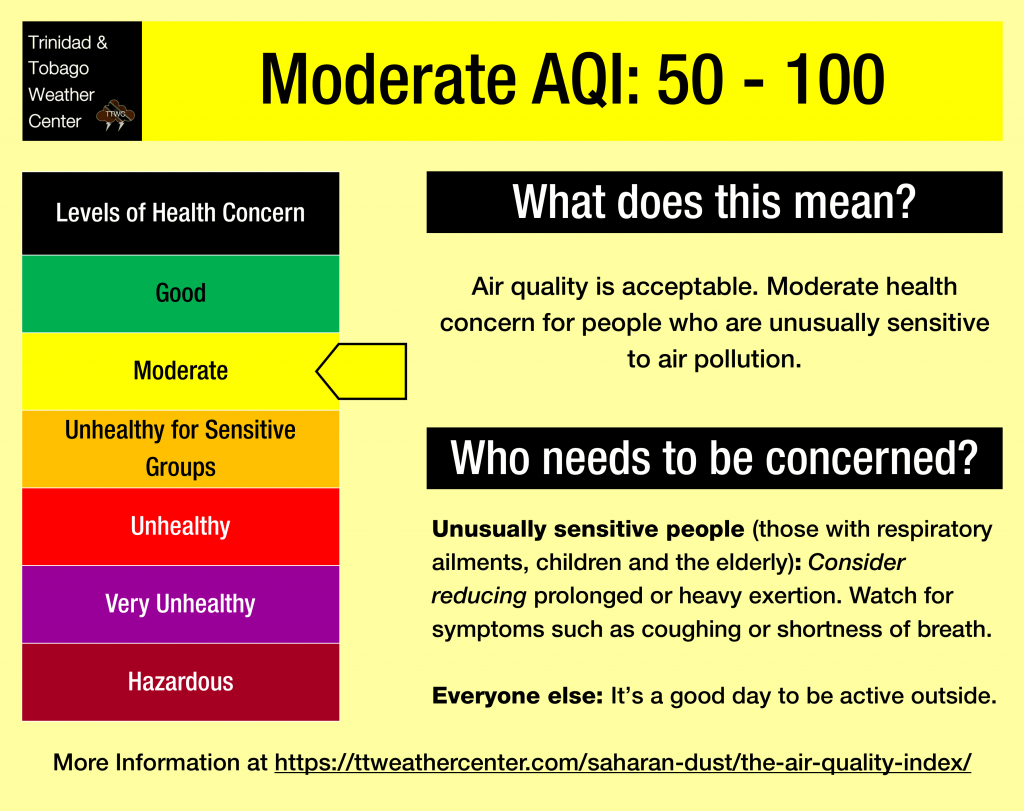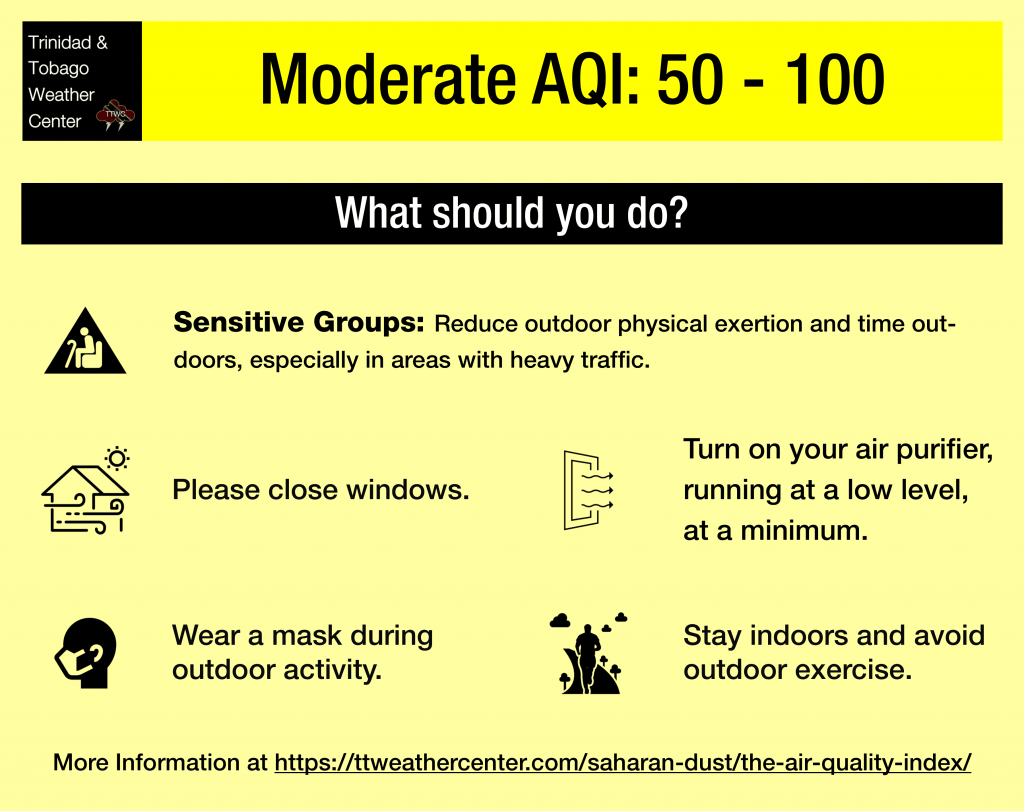On Tuesday, a moderate to high concentration dust plume is present across the Lesser Antilles, with higher concentrations in the Leeward Islands and lower concentrations in the Windward Islands, including Trinidad and Tobago. As expected for this time of year, the passage of tropical waves and the Intertropical Convergence Zone will bring brief periods of good air quality, but are typically followed by surges of dust; the next 10 days will be no exception.
What you need to know
— Saharan Dust Surges: Dust surges are forecast to arrive by late June 19th (short-lived, with moderate to high concentrations) and by early June 24th (prolonged, initially with high concentrations).
— Impacts: Throughout the forecast period, particularly between June 18th and 20th, and from June 24th, air quality is forecast to fluctuate between good and moderate levels.
— What Should You Do: Throughout the forecast period, but mainly on June 19th and June 24th, unusually sensitive groups are advised to take necessary precautions.
Current AQI Levels Across T&T
As of 11:00 PM, June 17th, 2025, the official air quality monitoring stations from the Environmental Management Agency (EMA) at Beetham outside of Port of Spain, Point Lisas, and San Fernando report air quality that are good to moderate levels while all other stations (Signal Hill, Toco, Arima) are not currently transmitting PM2.5 or PM10 data.
Unofficial air quality monitoring stations at Longdenville and Woodbrook report air quality levels that are good to moderate.
These measurements are based on PM2.5 (particulates smaller than 2.5 micrometers in size, typically associated with increases in Saharan Dust, vehicle exhaust, and smoke) and PM10 particulates.
Outside of rainfall, visibility, used as a proxy for Saharan Dust concentrations, at the A.N.R. Robinson International Airport at Crown Point, Tobago, and Piarco, fluctuated between 8 and 10 kilometers over the last 24 hours.
Saharan Dust Forecast For T&T

Remainder of June 18th: Moderate and decreasing concentrations of Saharan Dust. Air quality levels are likely to improve from moderate to good. Horizontal visibility outside of rainfall is expected to range from 8 to 10 kilometers.
June 19th through June 21st: Moderate to high concentrations of Saharan Dust with air quality generally at moderate levels. Horizontal visibility outside of rainfall is expected to range from 8 to 10 kilometers.
June 22nd through June 23rd: Mild concentrations of Saharan Dust. Air quality levels are likely to improve from moderate to good. Horizontal visibility outside of rainfall is expected to be near and above 10 kilometers.
June 24th through June 27th: High concentrations of Saharan Dust with air quality levels initially at moderate to unhealthy for sensitive groups between June 24th and 25th, remaining near moderate levels into the subsequent weekend.

What does this mean for you?
Generally, over the next 10 days, air quality levels are forecast to be at moderate levels, with periods of good air quality during the passages of the ITCZ or tropical waves. Between June 24th and 25th, air quality could dip to levels considered unhealthy for sensitive groups.


We’re now in a period where the Intertropical Convergence Zone, tropical waves, and occasional tropical cyclones may shield Trinidad and Tobago from the Saharan Dust events. While tropical waves are notable in moving dust across the Atlantic and the Eastern Caribbean, these periodic tropical waves also improve air quality.
Peak dust concentrations climatologically occur during June across the Main Development Region of the Atlantic, just east of Trinidad and Tobago.

The concentration of the dust that follows the wave depends on its strength as it moves off the West African Coast. This is because of stronger thunderstorms across Central Africa. As strong winds move downward and outward from these thunderstorms, they kick up dust as they move across parts of the Saharan Desert and transport it into the upper atmosphere. This “plume” of dust follows the axis of the wave as it progresses westward into the Atlantic.
Dust that enters the upper levels of the atmosphere can then be transported across the Atlantic Ocean. The plumes of dust eventually affect the Eastern Caribbean.
Larger, more concentrated plumes of Saharan dust begin in April and continue through November.











